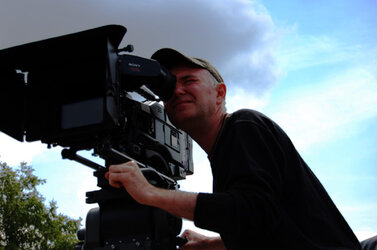A Digital Original : "A Secret", an interview with Gérard de Battista, AFC
by Wilfrid Sempé, AFCWilfrid Sempé : I wanted to go back to your first collaboration with Claude Miller on Little Lili. What was your initial approach, and how did you enter into his world and his team ?
Gérard de Battista : In 1999, I worked with Bernard Stora on A Considerable Inconvenience produced by Annie and Claude Miller and Films de la Boissière. The film is the story of a young soccer player shot with very little lighting. It was then that I really started working with sodium lighting. Working with Peter Abraham, my gaffer at the time, we rigged up some lights using mercury or sodium bulbs instead of the usual tungsten. The soccer sequences were shot in Digital Beta in order to record the games in continuity. Then Claude shot Of Woman And Magic, as part of Arte’s Small Cameras series, with Philip Welt as cinematographer.
Arte decided to blow up the movie on to 35mm film for theatrical release, and it was a success in the theaters, but DV blown up to 35mm, wasn’t very good. I’ve seen the film on TV.
When Little Lili was in prep, Claude and Annie who were the producers at the Films de La Boissière company decided to shoot in DV, as it was low budget.
Upon reading the script, I found many notes relating to lighting, and I told Claude that I didn’t think the DV format really lent itself to the project. He showed me a 35mm copy of Of Woman and Magic and, in fact, the result was not satisfactory. The film had not been shot with a view to film output. There were a lot of interiors, with wide-open aperture shot with a PD150. I proposed using HD. We went to Bogard to test the 900s and the test film out at GTC was very good. So we went off with a set of Canon HD primes, not the set that exists today, and with a zoom, which is still used these days.
I had really covered myself in terms of accessories, which tended to turn the set into a science project. After two weeks we cleaned house : out went the 24-inch monitor, its cables, and other control monitors.
We simplified everything and ended up with the system as it is now. After all, the value of HD is to be able to shoot light. For the past four or five years, working with HD has meant paring down the gear, to return to the level we had with 35mm, before the invasion of video assist.
WS : It’s true that you can shoot with very little now. Do you work without a waveform monitor ?
GB : No, we have a small cabinet, with a 9-inch monitor, and an Astro waveform monitor. In general when I frame, I begin by defining the T-stop with the viewfinder using a zebra set at 95%, so as to avoid any foolish mistakes in the highlights.
In our system, the first assistant does roughly the same work as usual : focus, camera management… The second assistant has a major role watching the monitor during takes.
I work with my finger permanently on the T-stop, knowing well in advance what I will do when I get to color timing. I do the timing in my head ; I know where I will put the grading masks and shapes.
WS : So, there is still the possibility of a dialogue with the director, who is not seeing the final image…
GB : No he’s not, but it’s very simple to explain to him what will be done in color timing. From time to time, there were a few aesthetic discussions after which he could dedicate himself to his players. Claude never came to see what I call "our very own dailies" : every evening we viewed the original tapes on a big calibrated screen, before sending them to the lab. The other directors I worked with, however, Stora, Moati, and Lelouch, did attend.
WS : With Lelouch you must have lengthy dailies.
GB : It’s very important for him to see them afterwards, as he doesn’t watch the 9-inch monitor during the shoot, because he’s with the actors on the set.
The role of second assistant is a little different, he really has to have a critical eye, and should have no apprehension, or hesitate to speak up when it’s not going well. It’s not his habitual role, which is usually to keep quiet and learn. We’ve had to rearrange the conventional hierarchy.
WS : Yes, normally video assist management is given to an intern…
GB : Yes, but this isn’t video assist, this is my domain. Nobody looks through the viewfinder except myself, my gaffer, and, on occasion, the director and the second assistant, and that’s all. If the director wants to watch the scene, he can see it on the video monitor. Claude had an image on a small LCD without a recorder ; he had a switch to go between cameras.
Bernard Stora does not need to be close to the actors. So he has two monitors, two recorders, a chair and a table for his coffee.
Claude Miller looks at the shots during set up and then is with the actors during the shot. Lelouch stays with the actors, and doesn’t look at the screen at all.
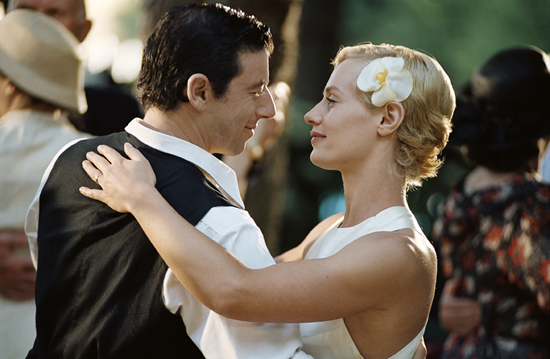
WS : Claude Miller was no doubt very happy with the image of Little Lili, but was the question raised for A Secret, whether to shoot film or HD ?
GB : No, because at first he wanted to do it the way it was done on Little Lili. With HD, one doesn’t need to constantly reload, there is a 45-minute load.
For Lelouch, HD represents a 45-minute load, and very little lighting needed for evening or night shoots. Claude Miller loved the digital result of A Secret, it was a timed with digital projection, which he found wonderful. I know he would have been delighted with the digital projection the other night...
I know of no director with whom I’ve shot in HD who would say, "I will never shoot with HD again." What’s more, the workflow has made great strides. Digital projection remains the missing link. As I said the other night at the screening, "you are going to see the image in its original format."
WS : Postproduction is still expensive…
GB : Especially for a 35mm film that has a very small budget for production and postproduction. It’s not really worth it to shoot in HD with the same type of storyboarding and lighting as in 35mm.
WS : For A Secret you could have used the camera with 35mm lenses…
GB : We had one Digiprime in the set, and the rest were Canon, whose definition is very good. It’s true there are debates about depth of field, but that’s linked to the to the focal length, not whether the lens is HD or 35mm.
With the same angle of view, you will have very short focal length, if you’re using a 2/3-inch sensor. You can use the Pro35 system to obtain the 35mm depth of field, but to me that’s a huge mistake. I don’t even want to hear about it : you’re shooting a ground glass, and a rotating one at that !
Also it’s cumbersome and complicated, it’s of no interest, you might as well shoot in 35mm. Or you go with the Genesis, and there you have the depth of field of 35. In our shooting, you have to keep the iris very open and if possible, lengthen the focal lengths to achieve a shallow depth of field.
WS : Still, you were trying not to have too great a depth of field…
GB : Yes, to avoid the actors being pinned to the set, the “photo montage” style where everything is clear. I’ve been known to soften part of the shot during the color timing, which is easy to do with all the devices available now. Another reason it’s important to be familiar with all the tools in the HD workflow.
WS : How did the pre-production go with Claude Miller, in terms of the aesthetic approach to the image ? Did the fact that it’s a period piece imply anything for you ?
GB : The character of Francis was born in 1946, like Philippe Grimbert, the author of the book, and like myself.
In the atmosphere of a Parisian apartment, I could replace the heads of the actors with the heads of certain members of my own family, I shot these scenes like a souvenir photo album ; I know it’s also a little true for Claude, also a Parisian, and from the same milieu.
In 1956-1960 I attended screenings at my high school film club, or with teachers, of films like Night and Fog… The ambiance of the art classroom was transformed into a screening room by drawing the curtains.
Claude originally wanted four major periods in the film (in fact there are six periods). The part that happens in 1985 was more than likely to be in black and white. The “dream world” where Francis imagines the life of his parents during the war whilst ignorant that they had another son, was in sepia, a little colored, like old stencil-colored postcards.
The Sixties, when Francis is a teenager, Claude called the “Formica years” he wanted the colors to be both saturated and poor, a slightly extended range, reds very red, blues very blue, and so on. The Thirties were normal.
In the end we didn’t accentuate the Formica part, and the Thirties were slightly colored copies reminiscent of the era, not great, not natural colors, fairly saturated. The “dream world” became sepia, and the contemporary era remained black and white, even while shooting, the monitor and camera viewfinder were in black and white.
During prep, I told the wardrobe supervisor, Jacqueline Bouchard, to shoot black and white stills of the outfits for that period. As a prelude to future collaborations, I invited as many people as I could to the color timing sessions : Jacqueline, Lucia Bretones-Mendez, the makeup artist, and my gaffer Pascal Lombardo.
WS : Do you think the video makes a difference to the work of the makeup artist ?
GB : I honestly don’t think so ; she worked as usual, with a very light touch. However, you need to be much more vigilant in HD with shine. Benoît Lestang, the FX makeup artist did the aging effects. He was always watching the image on the monitor. The most difficult aging effects are in the scenes in black and white.
The characters played by Patrick Bruel and Cécile de France are very old. They are never filmed in close-up but rather in three-quarter profile, it is not at all stressed and yet quite impressive !
Also, I greatly appreciated the work of art director Kohut-Svelko : between the years 1930 and 1960, the light is the same, but not the image. Only the art direction makes the difference.
WS : The changes are subtle but visible.
GB : He is a wonderful art director ! He is very present, he looks through the camera, at the monitor, and says nothing, then he offers a lamp, or a light bulb. I hope that everyone can work with people like that.
What I like a lot about working with HD is how it involves everyone in the image. However if you want to keep your little secrets, it’s a little more difficult than before.
WS : What struck me in the image of A Secret was the "mélange" of a very natural-seeming light, apparently made by daylight or sources in the set, with a very sophisticated aesthetic. I found it very powerful.
GB : For all of the sound stage shoot, I tried to reproduce daylight : we brought it in through the windows, there was no unjustified backlight on the actors. I began in this way, trying as far as possible to avoid placing the camera where the light would not be interesting.
WS : The way the light falls on the faces of the actors, their faces sculpted by the shadows, is very successful. You get the impression of natural daylight, you don’t feel the light sources.
GB : For the night interiors, Jean-Pierre Kohut-Svelko and I had quite a few lights in the set, which we did not necessarily use. Occasionally I’d place cubes and fluorescents inside the set to mimic daylight.
The kerosene style lamps were lit with oil. There was nothing more, when they climb the stairs in the house shadows fall on the wall as the person who bears the lamp moves, and I love it. I suggested the kerosene lamp, because we had done tests with the gamma curves of Olivier Garcia (DIT), who suggested a curve that allowed me to shoot at plus 9db without much noise. We did the tests with a kerosene lamp, and it worked very well.
For the scenes in the room, there is a small lamp with a 40W bulb with a grad to strengthen the light of the kerosene lamp, and in the love scene there is moonlight that enters through the window ; it’s a small HMI, the usual recipe.
If we had shot those interior night scenes on film and I had pulled out a meter, I think I would have raised the light.
We shot wide open, without pushing the gain ; in the studio for the night scenes, we were at 0 db, with the stop at T2, T2 1/2. The way these cameras react in low light, and in order to have the flexibility and contrast while under-exposed, we lit as if we were at ISO 1000 or 2000, easily, and not 320 (the nominal value of the camera in the middle of the curve).
WS : It’s true that there is a kind of average, but it can go much further, because the bottom of the curve goes so far…
GB : In the middle of the curve, we are indeed at ISO 320 ; I measured it on a neutral gray, with the camera’s auto exposure. HD is a kind of bizarre film stock, because it displays 320 ISO in the middle lights, but far less in the highlights, and much more in the dark areas.
WS : Film has a fixed sensitivity, while the HD sensor has a sensitivity that modulates according to the light it receives. It takes getting used to, but it’s interesting.
GB : I like to leave the faces a bit in the shadows so for me, the scenes shot in sunlight should be overexposed, hence the idea that I often apply, which is to put points of sunlight in the set, trying not to let it touch their faces.
When overexposing, I close down the iris as much as possible, I expose for the highlights, and having the zebra set at 95% serves me well, because I perceive the zebra as if it were at 100%, and I close down as a reflex ; it gives me an some comfort to know that I have a little headroom.
I use grad filters, knowing that we can compensate for the "over graduated" later if necessary. For skin tone, we have very low curves, the light is very soft, and I prefer to under-expose a bit. This is what people tell you when you start in digital : if you hesitate between two apertures in film, it’s better to open up, and here, it’s better to close down, otherwise it won’t work. And there are moments when it doesn’t work. With a Digital Image Technician, we wouldn’t have had these problems, but it would create other problems in terms of a reasonable crew size.
WS : When you work with a monitor instead of the viewfinder, theoretically, you should be permanently glued to the monitor. But if you are like you and me, and you’re operating at the same time, it’s a problem.
GB : In the very beginning, I would replay the video often, which wasn’t helpful for the shoot. While setting up the lighting, and it depends on the shots, I put the camera in a corner of the set with a short focal length with a frame that isn’t that of the scene, and I set my base lighting while watching this on the monitor. After I’ve set the lights I sometimes do rehearsals of the camera movement to get an idea of the base lighting, but mostly I have to have great faith in the person I’ve put in front of the monitor.
WS : There was a B camera operator, Claude Miller’s son, Nathan, was he a bit of a free agent ?
GB : I hope he felt free ! He is very knowledgeable about film and has a lot of taste. I found he made a tremendous difference to the film. With his intuitive technical knowledge …
This goes back to the story about director Philippe Lioret’s * : he can’t read a D Log E curve and he hasn’t learned about depth of field, but he knows how to say, “that suits me, that does not…”
*De Battista is alluding to the experience of his fellow cinematographer, Patrick Blossier, AFC. At the preview screening of The Light in October 2004, Blossier said :
“I’ve never understood how you could separate the frame from the light ... When Philippe asked me to work on The Light, I hesitated, because Philippe is a director who operates, and I couldn’t see what my position on the film would be.
In order to convince myself, I told myself that this would be an experiment and that I could check whether the time spent operating diminished the lighting. When the film was finished, I still didn’t have a clear answer to my question. I like the film, but I suffered from not being able to operate. I had trouble finding my place on the set. I cursed the video assist. But what of the lighting ?”
WS : In A Secret, I found the marriage scene very lively, it looks as if the cameras are dropped in the middle of the actors, as if it were all shot in one go.
GB : That’s not the case at all, we filmed shot by shot, handheld cameras revolving around the actors, in the style of Lelouch. The direction of the extras was very good, the assistant director, Denis Bergonhe did a great job.
WS : There are a few special effects, especially in the scenes with the imaginary brother, and in the train sequences ?
GB : The train is green screen and the landscapes were shot separately.
WS : Did you have the landscapes in the can before shooting ?
GB : No, afterwards. We did the plates in a car, in the Creuse region. There is only one effects scene with the imaginary brother, when we see him do a dive in the dining room, the other shots, the diving board shots are normal, underexposed. For the parallel bars, we lit from behind to create a silhouette. In the scene where the imaginary brother gets on the bed, we just made sure you couldn’t see the face of the small actor. The dive scenes were shot in gray weather, which allowed us to have a nice texture in the sky, in good weather we wouldn’t have had anything.
Transcribed by Hélène de Roux
Translated by Benjamin B
The crew
B Camera operator : Nathan Miller
Camera assistants : Stéphane Degnieau, Luis Armando Arteaga, Dorothée Guermontrez, Mathilde Perreau
Gaffer : Pascal Lombardo
Key Grip : Thierry Canu
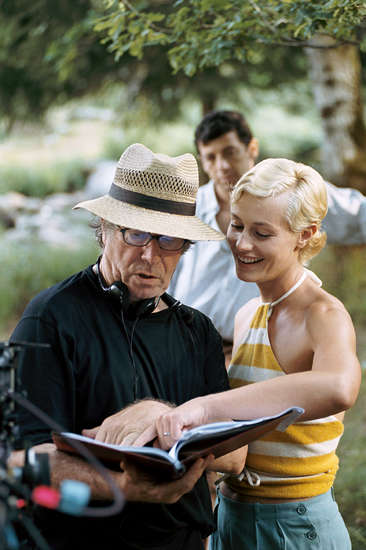
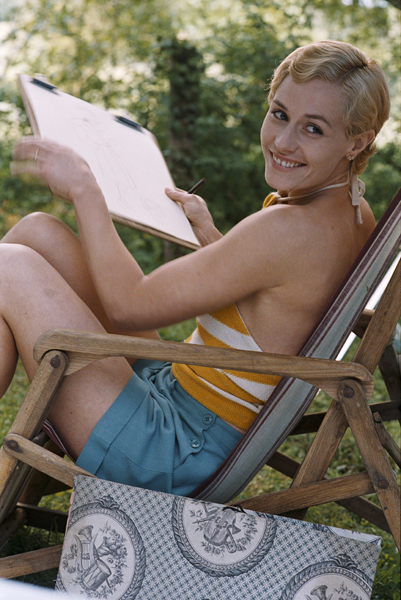
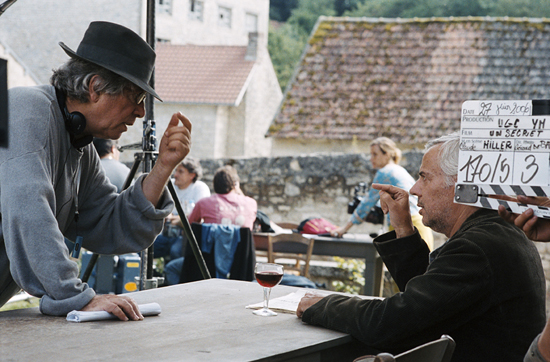
 En
En Fr
Fr
